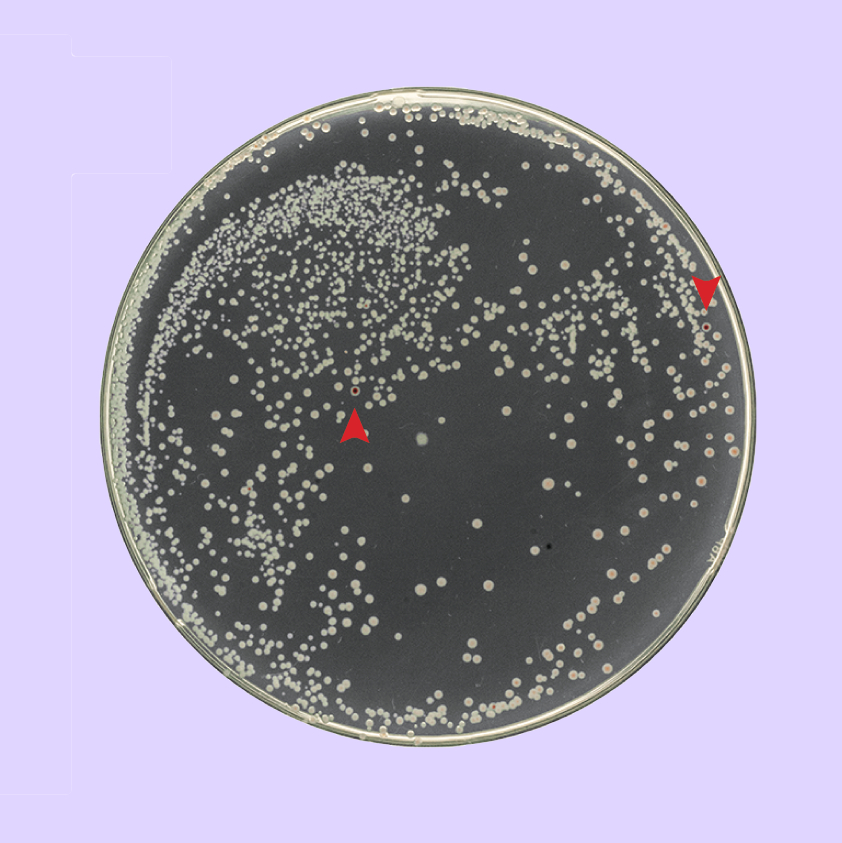Vive la résistance
Interview with
Michael Cox from the University of Wisconsin Madison has been conducting an experiment into evolution. He has been speaking to Chris Smith about what was discovered... 
Michael - We wanted to understand what makes a cell resistant to ionising radiation. So, ionising radiation is the kind of radiation that you get from x-rays. It's the kind of radiation that causes enormous damage to cells. It's important for a few reasons. There are bacterial species and also some fungal species frankly that are very highly resistant to ionising radiation. To give you an idea, ionising radiation is measured in units called gray. A human being would be killed by having a dose of 3 to 5 Gray. Bacterial species that we work with called Deinococcus radiodurans can survive 5,000 Gray with no lethality. So, it's literally thousands of times more resistant than a human being would be. A second issue is just understanding why ionising radiation causes cells to become sick - is it damage to their DNA? Is it damage to proteins in the cell? What is it about ionising radiation that is most dangerous to a cell and causes radiation sickness?
Chris - How have you pursued this?
Michael - Well, we realise that we could let the cells tell us what was important basically. You do that by doing an evolution experiment. So basically, we took E. coli cells which are not particularly radiation resistant and we subjected them to high doses of ionising radiation, enough to kill 99.9% of the cells. And then we grew up the survivors and then we did it again. We went through 20 cycles of this selection. And by the time we were finished, we had a culture of E. coli cells that was almost as resistant to ionising radiation as with Deinococcus. We did that experiment four times and got the same result all four times and it was those populations of very resistant cells that we used to try to figure out what was important in making a cell resistant to ionising radiation. The advantage of doing this experiment is you don't have to look through all the genes in the cell. All you have to do is figure out which genes had changes in them.
Chris - So, did you literally take the very resistant coliforms that came out of the evolution experiment and just like for like compare the genomes?
Michael - We took about 30 isolates from the various populations and obtained a complete genomic sequence of each isolate. That told us where all the mutations were in which one of these isolates. Now, a typical isolate has about 70 mutations and many of those mutations are irrelevant. They're just neutral mutations that kind of appeared during the selection and don't really contribute to the phenotype. So, the real job was to figure out which of the mutations were really important. By this doing with four different populations, we could compare isolates from different populations and find patterns. And so, we focused on genes that were targets of mutations over and over again in the different populations. We were able to home-in on mutations that had a particular importance to this new capacity of the cells to resist ionising radiation.
Chris - When you looked at the resistant forms, what changes had they adopted?
Michael - In the population that we looked at, we were able to explain virtually the entire phenotype on the basis of three mutations and these mutations were all the genes that encode proteins that are involved in DNA repair. In the case of this one population, the major change that occurred in the population was to improve its capacity to repair its DNA and explain virtually the entire phenotype. Now, in other populations, there are mutations that we suspect are having a different kind of effect, making it more difficult for the proteins to become oxidatively damaged by the radiation. So, in these other populations, some of the adaptations that are occurring have to do with protecting the cell from ionising radiation rather than repairing the DNA. And so, this is an example of another way to make more resistant ionising radiation.
Chris - What do you think the implications of this are?
Michael - It's likely to give us a better understanding of what makes a cell particularly sick, what makes it susceptible to radiation poisoning. I think damage to its proteins and damage to its DNA is clearly the major thing that happens to cells. Another implication is, we should be able to generate eventually, radiation resistant bacteria that could potentially be used to give bioremediation and radiation waste dumps. I think that there is potential to use some of these technology in useful ways.
- Previous Buzz off: anti-aphrodisiacs in flies
- Next Creating a chromosome





Comments
Add a comment